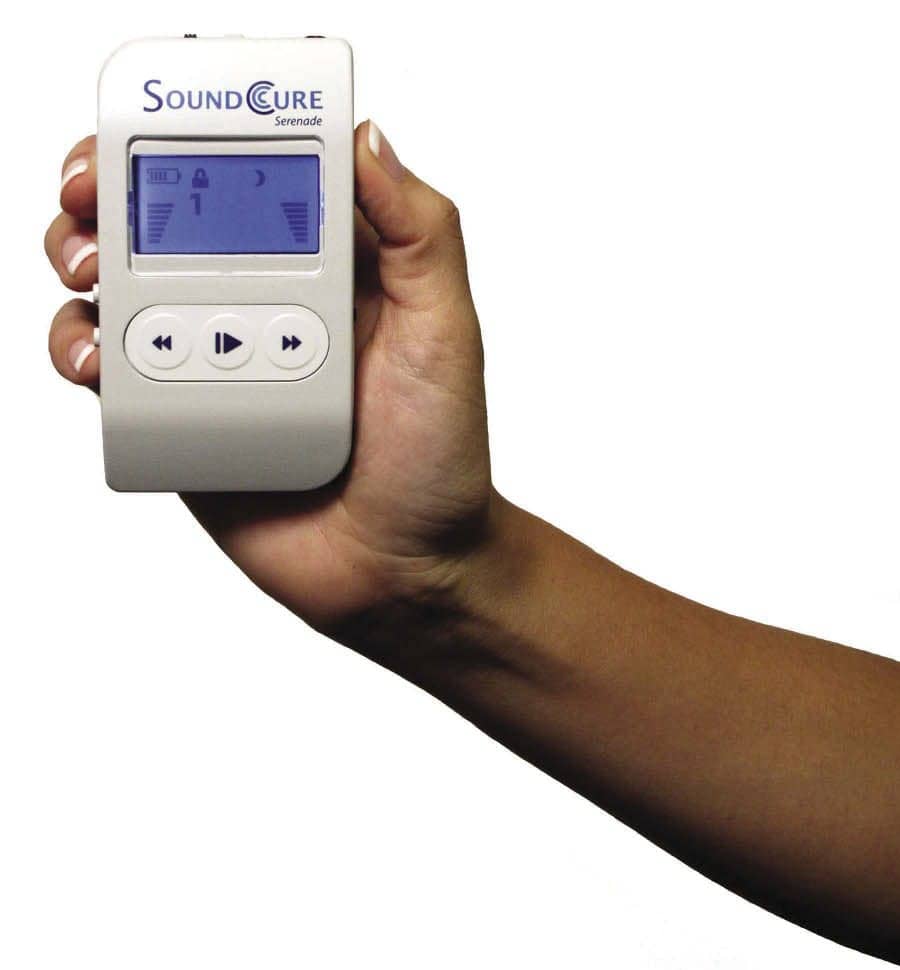By Jeff Carroll, PhD
From homeopathy to supplements and guided meditation podcasts, tinnitus sufferers are often promised fast relief and relaxation. But the meager results they gain from such elixirs only add to their frustration. Some never see a medical professional, and others do but are told to “just live with it” because “nothing can be done.” For those who finally do see an audiologist or hearing care professional, helping them find relief can be like talking them down from a building ledge.
Sound Therapy Management Key to Taming Tinnitus
While research continues, tinnitus is a condition that needs to be managed. Sound therapy remains the most effective form of treatment. Sound therapy can provide acute relief as well as long-term benefit through a process known as habituation, in which patients gradually put their tinnitus in the background where it belongs rather than allowing it to dominate their attention. However, certain sound therapy tools, if used incorrectly, won’t be effective. A combination of patient education, counseling, and ongoing management is critical.
Sound generators come in different varieties. There are highly dynamic sounds that are intended to produce relaxation or distraction. Devices with highly fluctuating sounds can be effective both in distracting patients, in much the same way a conversation does, or in relaxation, such as with quiet music. The challenge with highly dynamic sounds, however, is that they tend to draw attention and therefore make many of the tasks that tinnitus sufferers already deal with—such as reading, concentrating, or sleeping—even more challenging.

|
| Figure 1. The SoundCure Serenade is a handheld device that is programmed much like a hearing aid using a computer and USB cable. The sound therapy device offers four tones (two customizable S-Tones, and one custom narrowband and one broadband sound). |
Louder Maskers vs Soft Sounds
Steady sounds are easier to put in the background and can simultaneously interfere with tinnitus. These sounds, commonly known as maskers, have received mixed reviews. The most common masker is white noise, which, due to its broadband nature, can be quite soothing for patients. But often the treatment sound must be irritatingly loud to cover up the tinnitus. Furthermore, traditional maskers offer relief only during use; once they are turned off, the tinnitus continues. So, when the masker is on, it is effective but it also prevents the patient from doing other things without distraction. When it is off, the tinnitus is still there. Neither is a great option.
New developments in sound therapy have led to the creation of a device called Serenade, from SoundCure, which uses soft, low volume tones called S-Tones to offer relief. These treatment tones are meant to be played softer than the perceived tinnitus sound, and are intended to be listened to passively as background noise, much the way someone might hear an air conditioner or a refrigerator humming. The tones are customized to each patient relative to the pitch of their tinnitus sound and are modulated.
S-Tones for quieter tinnitus relief
Research suggests that the modulation from the S-Tones produced by the SoundCure Serenade device leads to a greater amount of neural activity. Reavis et al studied 20 patients with chronic tinnitus. In the study, the patients listened to five types of sound comprising 17 individual external sounds, presented randomly, for a total of 340 trials. Patients listened to sounds and rated their subjective tinnitus before, during, and after the sounds were presented during many hours of testing. The results,1 which were published in the April 2012 edition of JARO, detailed an acute effect relative to how the patients have the perception of their tinnitus reduced when listening to these treatment sounds.
Essentially, the study shows that the amplitude modulated sounds were the most effective at reducing tinnitus, and importantly, at a lower volume level than the patient’s perceived tinnitus. A total of 90% of the subjects experienced at least some suppression, defined as a reduced loudness with a sound presented at a lower volume than the patient’s tinnitus perception, with at least one of the stimuli. The greatest suppression was achieved with amplitude modulated tones with frequencies near the tinnitus pitch, or what SoundCure calls S-Tones. In the study, these tones were 4 times more likely to provide relief than white noise.
In total, about one-third (35%) of the study participants achieved a 70% or better reduction in their tinnitus, one-third (35%) achieved a 30% to 50% reduction, and one-third (30%) experienced less than a 30% reduction. Additionally, no patients reported a worsening of their tinnitus in the study. (For more information, see the interview with SoundCure CEO Bill Perry in the August 2012 HR.2)
A Noticeable Difference
Jesus Diaz of Tempe, Ariz, suffered with tinnitus for 10 years before seeking treatment. The constant humming sound he heard plagued him day and night. He described the sound as a “big sea shell” next to his ear all the time, and he had no idea what brought it on.
Desperate, Diaz finally sought treatment from an audiologist, who confirmed his tinnitus was a by-product of hearing loss in his left ear. He was fitted with Serenade set to a specific soft sound that matched his tinnitus. In the first few weeks of treatment, Diaz noticed the humming sound was getting softer, especially in the mornings when it tended to be the loudest.
“During the first month, there was really a noticeable difference,” Diaz said. “In fact, when I woke up in the morning, for the first 15 minutes I heard no sound whatsoever, just the usual external noises.”
The key to Diaz’s relief from tinnitus was using Serenade as instructed, and adhering to a daily sound therapy regimen: in the morning when he wakes up and at work for 2 to 3 hours. Upon leaving work, Diaz uses the device as needed, and before going to bed. Diaz is now able to go about his day as usual —reading, watching TV, talking, etc.
“Serenade has really, really helped me.”

|
Jeff Carroll, PhD, is Director of Clinical Services and Engineering for SoundCure Inc. He was the founding Director of the Tinnitus Treatment Center at the University of California, Irvine, and has worked with hundreds of tinnitus patients over the past decade. Dr Carroll holds a doctoral degree in Biomedical Engineering from UC Irvine and is one of the inventors of the S-Tone technology in the SoundCure sound therapy system. CORRESPONDENCE to HR or Dr Carroll at: [email protected] |
References
1. Reavis KM, Rothholtz VS, Tang O, Carroll JA, Djalilian H, Zeng FG. Temporary suppression of tinnitus by modulated sounds. JARO. 2012;13(4):561-571. Available at: www.springerlink.com/content/fk1126x5l228051h
2. Strom KE. Novel sound therapy: SoundCure harnesses research on brain science in fighting tinnitus. Hearing Review. 2012;19(08):52-54. Available at: /all-news/17296-novel-sound-therapy-soundcure-harnesses-research-on-brain-science-in-fighting-tinnitus




